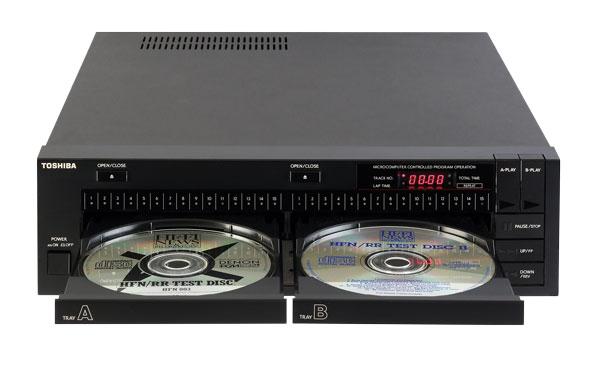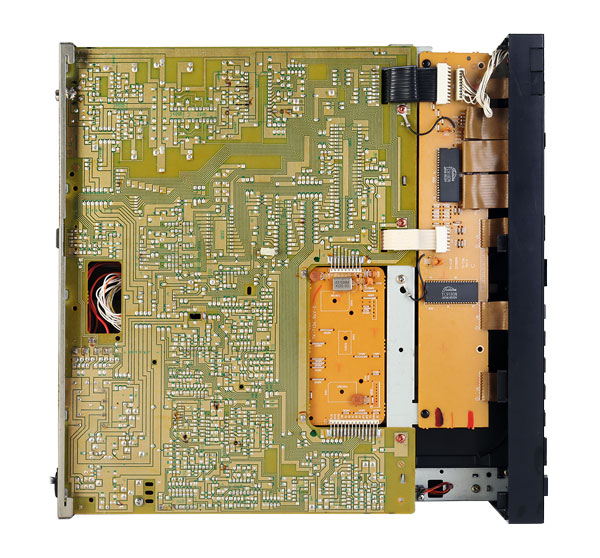Toshiba XR-V22 CD player Page 2

In-House Proud
Aside from the special mechanism used, the XR-V22 was largely conventional, employing a three-beam laser, no oversampling or digital filter and a single time-shared DAC. What was notable, though, is that the optical unit and all the key integrated circuits were made within the Toshiba organisation – there was no reliance on Sony, Hitachi or Philips parts. Ultimately, however, the twin-tray concept proved to be a dead-end until recordable discs arrived, though the multiple disc play idea stuck. Pioneer and Sony produced cartridge-loading multiple players within a few years while others made five-disc carousels. Yet none of the early multi-CD players could match Toshiba’s trick of being able to change a disc without interrupting the music.
The XR-V22 is a small unit and from across the room could be any basic CD player of its era. It’s only when you look closely that the two drawers become evident, one reason being that their presence sees controls usually found in the centre of the fascia pushed out to the edges in order to accommodate them.
Pop And Play
One example of this is the time and track display, which is not only located right at the top of the fascia but is simplified and miniaturised to make it fit. The main control keys are also small and occupy a thin strip at the extreme right. Playing a disc remains straightforward, however. Open whichever drawer you wish to use, pop in the disc, press the play key for the drawer it’s in and off it goes.
Regular readers may remember that in the case of the later Toshiba XR-J9 miniature player it was necessary to first select pause in order to use the ‘skip’ keys to search for a particular point within a track. This task is not simple to execute on the XR-V22 either, as here you have to press and hold the relevant play key and then press one of the skip keys if you want to search. No graphical clues are given on how to do this on the panel and I wonder how many original owners failed to work this out.

Lifting the lid on the XR-V22 reveals the underside of the player’s huge main PCB [see reverse, below]. Two Toshiba TC9180N ICs are visible on the display and control board
Hot Swapping
A strip of 15 tiny red dots above each tray indicates which tracks are available to play. Just as with the early Philips/Marantz machines, the XR-V22 can handle discs with more tracks on them, but for most titles 15 is enough. If two discs are loaded and ‘A-Play’ is pressed it will play all the pieces on both discs straight through. The clever bit comes with the programming.
Under the drawers can be found a numerical keypad and two memory keys, one for each disc. Selections can therefore be rapidly made, although the sequence will always be all the selected tracks from ‘A’ followed by all the selected tracks from ‘B’. What makes this special is that one disc can be removed, exchanged and programmed while the other is still playing. For example, while a disc is playing in drawer A one can load up another in drawer B, programme (say) track 5 and then swap over just by pressing ‘B-Play’. Once that’s under way, the same thing can be done in drawer A.
Short of having two players (and who did in 1985?) this was the most versatile way to play discs yet devised. Of course, the change between discs is slow, the optical unit having to lumber across, clamp the disc and read the table of contents before anything happens, but it remains impressive all the same.
It is clear that to include these refinements at the required price point savings had to be made somewhere and in other respects the XR-V22 is a very basic machine indeed. It lacks the luxurious feel of some of the more upmarket choices of the time and is not in any way a thing of beauty (although I’d have still been pleased to have had one at the time). Connections are confined to a pair of standard RCA audio outputs and a special socket for remote control integration with Toshiba’s matching units in the same range, not that these were very popular in the UK.


















































